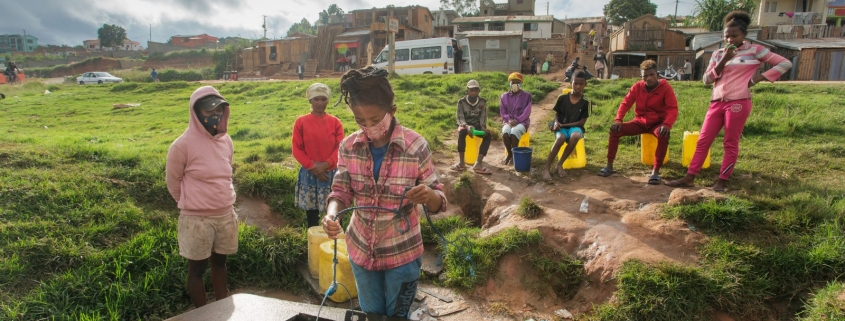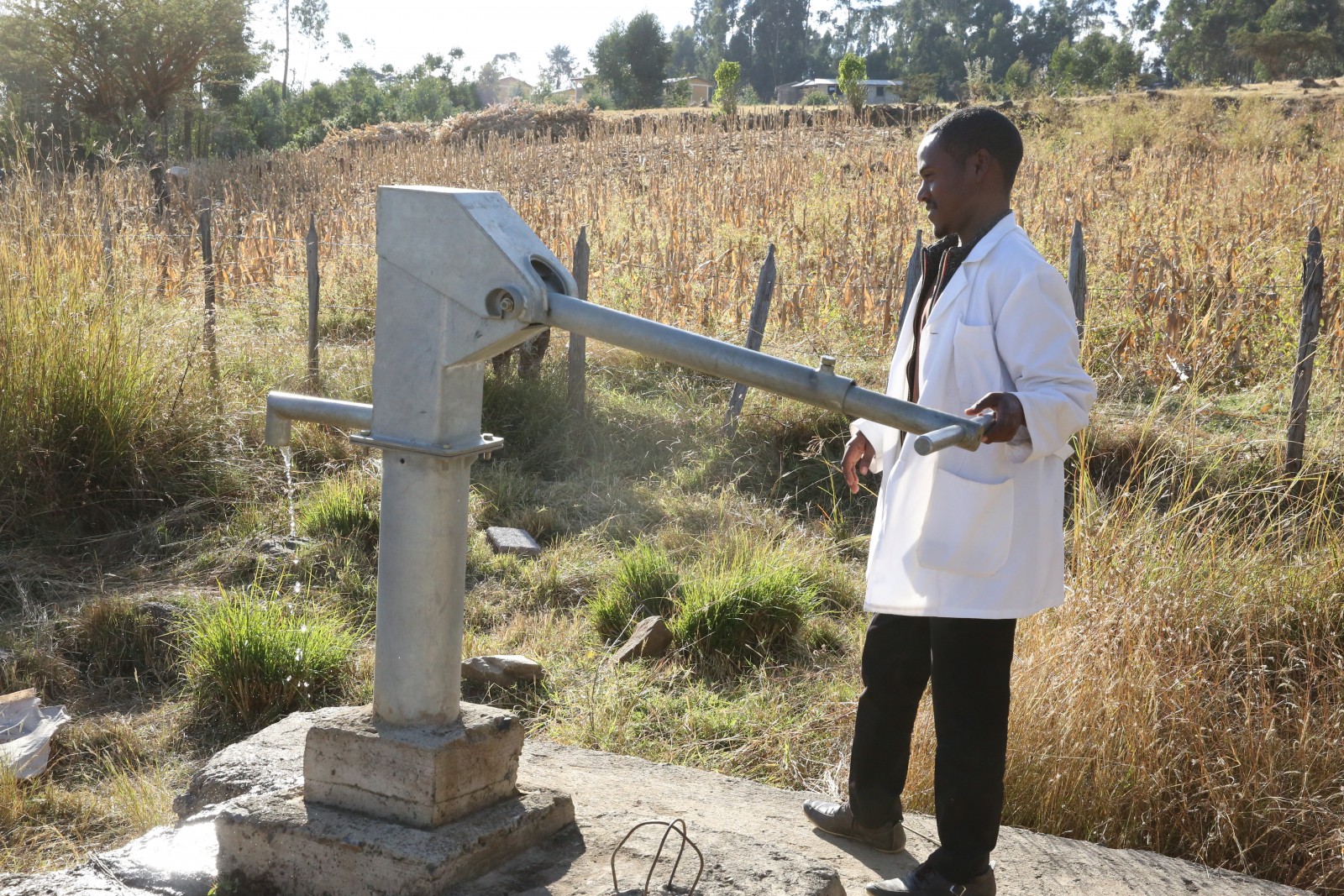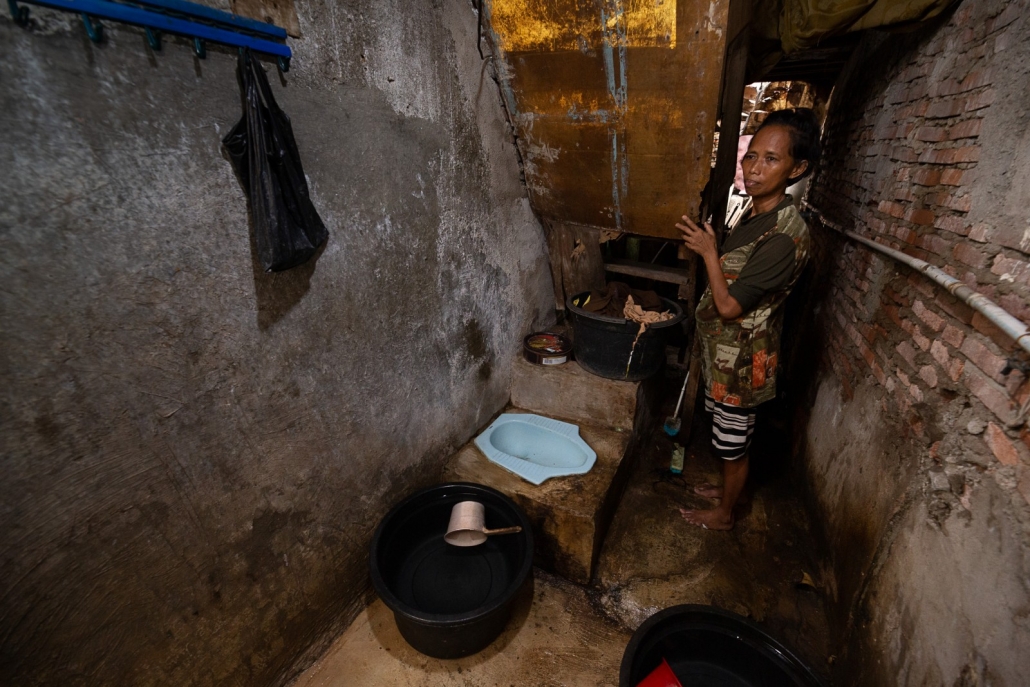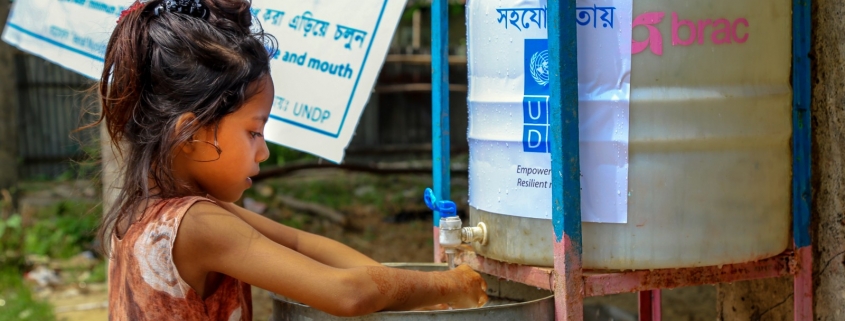 https://www.circleofblue.org/wp-content/uploads/2021/04/WP-3.jpg
1067
1600
Keith Schneider
https://www.circleofblue.org/wp-content/uploads/2018/06/Circle-of-Blue-Water-Speaks-600x139.png
Keith Schneider2021-04-20 08:58:552021-11-29 21:07:26Pandemic Brings WASH To Rare Inflection Point
https://www.circleofblue.org/wp-content/uploads/2021/04/WP-3.jpg
1067
1600
Keith Schneider
https://www.circleofblue.org/wp-content/uploads/2018/06/Circle-of-Blue-Water-Speaks-600x139.png
Keith Schneider2021-04-20 08:58:552021-11-29 21:07:26Pandemic Brings WASH To Rare Inflection PointUniversal WASH Gains Traction Even as Hand Pumps Lose Ground
Troubled water supply systems in Africa spur demand for new technology.
[bctt tweet=”For half a century the world tread a difficult path. It is now closing in on a momentous human achievement. Universal access to water, sanitation, and hygiene is well within reach. #WASHWithinReach” username=”circleofblue”]
This article, the third in a series on the global status of universal access to water, sanitation, and hygiene, is produced through a collaboration between Circle of Blue and the Wilson Center, with support from The Hilton Foundation. This independent journalism does not reflect the views of the Conrad N. Hilton Foundation. Read the first two articles here.
Key Takeaways
- Over 1 billion people have gained access to clean water since the India Mark II and Afridev hand water pumps went into widespread operation throughout Africa and Asia.
- In 2015, the UN attracted international accolades for setting Sustainable Development Goal 6 to provide clean water, safe sanitation, and access to a handwashing facility to every person on Earth by 2030. Yet no global institution is more beset by doubts about meeting that goal than the UN.
- The end of the era of hand pumps is in sight. Water suppliers are turning to other technology that can be managed online and remotely.
By Keith Schneider, Circle of Blue – May 4, 2021
With their blocky stamped metal heads and long arms, the India Mark II and Afridev hand water pumps are hardly aesthetically appealing. What matters is their design. That is, how well do they work?
Introduced in the 1980s, manufactured by the millions, and installed in communities across Africa and Asia, the two hand pumps are the most popular tools for lifting water to the surface from rural underground reserves. In that capacity, the two pumps occupy prominent space in the WASH sector’s long-running and formative debate over whether the global campaign is succeeding or slipping in the effort to attain universal access to clean water, sanitation, and hygiene.

A Doctor using an Afridev pump at a healthcare facility in rural Ethiopia. This doctor is demonstrating that little water comes out of this pump located on the facility property. Photo credit: Haik Kocharian for Village Health Partnership (VHP)
Well over 1 billion people have gained access to clean water since these pumps went into widespread operation. That’s success. But they are ticklish to manage. According to various studies, between 25 percent to 40 percent of the installed pumps no longer work due to weak community maintenance programs, corrosion, failed parts, and poor well construction.
Because of that, the Mark II and Afridev pumps are stirring another dispute: Could the “death of the hand pump,” as the Dutch think tank IRC suggests, be at hand?
Contaminated Water
That question gained fresh relevance in April. In findings published in Environmental Health Perspectives, a team of researchers at the University of North Carolina (UNC) reported that water drawn from hand pumps across rural regions of three West African countries contained trace levels of lead. The UNC team said it evaluated rural water samples in Ghana, Mali, and Niger drawn from 105 public taps and from 156 hand pumps, most of them Mark II and Afridev pumps.
In 82 percent of the samples, the researchers found detectable levels of lead. In 9 percent of the samples, they found lead levels above World Health Organization drinking water standards.
The principal source of the metal was brass components in pipes, valves, and faucets. The team did not evaluate health effects in communities exposed to the lead. But as Kaida Liang, the UNC project manager, noted in an interview, “There is no safe level of lead for drinking water, especially for children. It affects their neuro development.”
Circle of Blue sent numerous messages seeking responses from five pump producers and exporters in India, where most Mark II and Afridev pumps are manufactured. None replied.
The UNC findings come at a sensitive time in the realm of rural African water supply. Hand pumps are failing with increasing frequency. But new technology, principally electric submersible pumps powered by solar energy, has not yet proven to be more reliable. Because they are capable of lifting more water to the surface, submersible electric pumps work best with larger wells, and aquifers capable of producing at least 5 liters per second. Research by the British Geological Survey in northern Ghana, though, found that only 1 percent of the wells it tested were capable of producing that amount of water.
Debate About Hand Pumps
Given the shortcomings of the new technology and recent issues with hand pumps, the best way to get water to people is not clearcut. “This message, the ‘death of the hand pump,’ is not only too simplistic, but it is potentially damaging for the millions of people around the world that currently rely on hand pumps,” said Kerstin Danert, director of Ask for Water, a Swiss-based water and environment consultancy. “With as many as one in five people in sub-Saharan Africa likely to be relying on hand pumps as their main source of drinking water supply, the humble handpump provides an alternative to contaminated surface water and cannot be written off like that.”
Like so many other features of the global WASH campaign, the debate about the value of hand pumps illustrates the sector’s dueling views of the severity of the challenges it faces and its capacity to meet them.
On the one hand, replacing parts in hand pumps is a mammoth undertaking for manufacturers, distributors, and tens of thousands of maintenance teams. On the other hand, the surging number of hand pump failures and the money spent to fix them could spur increased investment to more rapidly upgrade well-based systems with new pumps and piped water delivery.
That is already happening in rural Africa, Asia, and Latin America as submersible electric pumps powered by decentralized solar energy equipment steadily supplant hand pumps. The submersible pumps are changing how water is delivered in rural areas because they can lift more water into pipes that reach faucets in homes and standpipes that are much closer to customers.
Customers tend to use more water when it is available on their premises, and water suppliers find they are willing to pay for that convenience. Higher revenues enable water companies to expand their operations, which in turn could help rural water suppliers develop the credit worthiness that investors seek.
In effect, then, the proliferating number of poor quality hand pumps could represent a setback on the path to universal access to clean water, or it could be an inflection point that leads to swifter progress.
The WASH experience with COVID-19 demonstrated the same point. The pandemic was initially projected to be a potential catastrophe for achieving WASH goals. The sector, though, proved its resilience. COVID-19 became a rallying point for alerting the world to the value of handwashing and the need to quicken the pace of investment and installation of hygiene facilities in rural schools, health centers, and hospitals. With the assistance of WaterAid, for instance, Ghana responded to the pandemic with guidelines and a funding strategy for installing and maintaining hygiene and other WASH infrastructure in healthcare facilities.

Many poor neighborhoods like this one in North Jakarta have sewage tanks that are open in the bottom, letting the putrid liquid flow directly into the vulnerable aquifers below, and back into informal water wells nearby. “Everyone has a septic tank designed to leak,” said one resident.
But in North Jakarta, water.org and other NGOs are using microcredit loans to make it affordable for residents to access potable and groups like BMT Bus (Bina Ummat Sejahtera), partially financed by water.org, offer small loans to empty overflowing septic tanks and install new ones. © J. Carl Ganter / Circle of Blue
Pessimism vs. Optimism
One sign that the WASH sector is uncertain about whether it is failing or succeeding is the United Nations’ influential yet almost schizophrenic messaging. In 2015 the UN attracted international accolades for setting Sustainable Development Goal 6 to provide clean water, safe sanitation, and access to a handwashing facility to every person on Earth by 2030. Yet no global institution is more beset by doubts about meeting that goal than the UN. In the debate on whether WASH is succeeding or slipping, the UN’s voice is the most pessimistic of all:
- “There are 2.2 billion people around the world who still lack safely managed drinking water,” said the UN last year, “including 785 million without basic drinking water.”
- “The sanitation crisis is still massive—4.2 billion people still live without safely managed sanitation. More than half the global population,” said the UN this year. “And 673 million people still practice open defecation.”
- “While water is integral to sustainable development, the fact is that we are nowhere near achieving the goals we have set out,” said Volkan Bozkir, president of the UN General Assembly in a tweet on March 18, four days before World Water Day.

Staff in a Cox’s Bazar refugee camp run an information campaign to spread awareness about Covid-19 to camp residents. Photo credit. Inter Sector Coordination Group / Haque Ershadul
The gloomy UN assessment may be a marketing strategy to attract attention. But there is ample room to doubt its accuracy.
For one, the UN is relying on four-year-old data.
Second, the agency’s interpretation of existing data stresses the negative. The UN asserts, for example, that 673 million people practiced open defecation in 2017. But that’s half the number that the UN says openly defecated in 2000.
In other instances, the UN seems to refute its own data. The agency says over 2.0 billion people use unsafe sanitation. But between 2000 and 2017, some 2.1 billion people gained access to improved sanitation facilities that were not shared with other families. The global population using safely managed and improved sanitation measured 68 percent in 2017, or more than 5.0 billion people.
Similarly, on clean water, the UN reports that “29 percent or 2.2 billion people lacked access to safely managed drinking water services.” But the 2017 data show that 88 percent of the world’s population, or nearly 7.0 billion people, have access to clean water in their homes and within a 15-minute walk. Nearly 1.8 billion people gained access to basic water supplies from 2000 to 2017.
The third point, arguably the most vital and one the UN did not widely broadcast, is that the 2017 data clearly show that developing nations across Asia, Latin America, and North Africa are closing in on meeting universal access goals by 2030.
In Vietnam, for example, 84 percent of the population had access to safe and improved sanitation in 2017, according to statistics from the WHO/UNICEF Joint Monitoring Program for Water Supply (JMP), up from just over 50 percent in 2000. Nearly 95 percent had safe water.
In Bolivia, 94 percent of the population had safe water, and 88 percent used safe and improved sanitation.
[bctt tweet=”The UN’s gloomy assessment of the status of WASH may be a marketing strategy to attract attention. But there is ample room to doubt its accuracy. #WASHWithinReach ” username=”circleofblue”]
The progress developing nations are making in WASH, according to studies by economists, coincides with rising national and personal incomes. As nations gain wealth, rising from low-income to middle-income, water infrastructure, sanitation infrastructure, and services improve.
That essentially leaves the 35 nations of sub-Saharan Africa as the WASH sector’s last big frontier. “Is universal access, reaching 100 percent for water and sanitation, achievable by 2030?” asked Stef Smits, senior program officer at IRC and a respected WASH researcher. “I think in 95 percent of the world, that is more or less achievable, based on linear projections of current rates of progress.
“For most countries in Africa, the target to reach universal access to at least basic water, I expect that to be achieved around the year 2040, based on those projections,” Smits added. “For sanitation, it will take longer.”
Governments Display More Resolve
As warm of competing trends converge to make sub-Saharan Africa an exceptionally difficult challenge. Rural regions tend to have the poorest people, the worst roads, weak supply chains, and very low population densities, making piped water schemes more difficult to install, maintain, and afford. Dense informal settlements with haphazard street networks, and inadequate water and sanitation infrastructure, are overtaking cities. Customers face limits on how much they can pay for water and sanitation, making it difficult for utilities and service providers to achieve decent cashflow.
And, ahem, the volume of human waste is daunting. More than 1 billion pounds of feces and 546 million gallons of urine end up every day in pit latrines, many of them in sub-Saharan Africa, according to WASH researchers at North Carolina State University.
Still, the situation is far from hopeless. Just as other rural regions of the developing world are on their way to resolving similarly challenging impediments, sub-Saharan Africa can too.
One promising trend emerging in Africa is the rising interest of government authorities in addressing WASH goals. Durban, South Africa, for instance, views providing water, sanitation, and hygiene to the 1 million residents of its informal settlements as a “moral responsibility.”
That commitment led to the development of the centerpiece of Durban’s WASH program—the “community ablution block” public washroom. It is an ordinary marine cargo container refitted with running water in sinks, toilets, and showers. Durban has more than 2,500 ablution blocks installed in many of its nearly 500 informal settlements.
Other innovations are the urine-diverting toilets, standpipes, and water storage tanks Durban installed outside settlement homes; a mobile sludge processing plant that sterilizes waste hauled from toilets to produce usable compost; and an aggressive program to clean waste from pit toilets.
System Strengthening
Another signal of expanding government commitment to WASH is unfolding in the Kabarole District in western Uganda. Two years ago, the district completed the country’s first regional masterplan for achieving the 2030 WASH goals. Developed with the help of IRC, the plan addressed how to build the capacity and coordinate the work of institutions, legislators, and regulators. It also addressed financing and called for rigorously assessing performance.
The work plan’s scope was meant to be large enough to serve the district’s more than 325,000 residents, half of whom did not have safe water to drink. Over 90 percent lacked safe sanitation. To show how difficult it is to achieve WASH goals in a rural sub-Saharan region, the plan’s authors calculated that the total cost of capital investment, maintenance and support would surpass $24 million for water supply, and $48 million for sanitation. In order to meet those costs, the district must increase its annual investment in water and sanitation tenfold.
In an article about the masterplan, Community News, a Ugandan newspaper, reported last summer that the masterplan is making a difference. New pit toilets have been built in Kabarole, and new water hand pumps have been installed in homes.
The Kabarole plan illustrates what Susan Davis, of Agenda for Change, calls “system strengthening.”
“In any country it’s primarily the government’s job—local governments, local utilities, local regulators—to do the work of providing safe water services,” said Davis, global coordinator for Agenda for Change, a network of 14 prominent non-profit WASH and multi-sector groups. “Our members are there to help them do their jobs. Until about five years ago, that was a radical notion for nonprofits, many of whom saw government as in the way.”
Technological Advancements
Another fortunate trend in and outside sub-Saharan Africa is advancing technology. In 2011, the Bill & Melinda Gates Foundation began a $265 million project to develop new approaches to manage human waste in developing nations. The foundation was particularly interested in designing: 1) multi-use toilets that would be used in schools, clinics, and public toilets in slums, and 2) single-use toilets that process wastes in households without needing running water or a sewer. The project generated multi-use toilets that are starting to reach the market and single-use toilets that are still under development.
But the more consequential outcome of the foundation’s investment could turn out to be the development of the Excluder, a mechanical tool developed at North Carolina State University to empty wastes from pit latrines.
In Africa, besides handling human wastes, pit latrines are also dumping grounds for all manner of debris, including clothing, bottles, magazines, condoms, and menstrual pads. The garbage found in latrines often clog mechanical emptying devices. Attached to the end of a vacuum pump hose, the Excluder is designed to actively screen out trash and enable vacuum pumps to suck up the feces. If the machine is as durable as its developers say, the Excluder could make unsewered sanitation much safer and more convenient. It also could spur a wave of waste-related entrepreneurship.
The Excluder will undergo field tests in Ghana and is nearing commercial application, said Francis L. de los Reyes III, the engineer and NC State professor who leads the design team. The price will be $1,500, which waste management companies looking for opportunity in an immense market with extremely high demand could afford. “We see this machine as a way to help professionalize the business,” said de los Reyes. “It could lead to a regulated sanitation economy.”
The NC State team has been working on the Excluder since 2012, when it received the first $100,000 grant from the Gates Foundation. If the tool performs well, its widespread adoption could be swift, especially if the UN, the World Bank, or some other big development institution gets involved.

Filling water containers at an India Mark II pump. Photo credit: Haik Kocharian for Village Health Partnership (VHP)
That’s how the Mark II and Afridev water pumps spread. Both pumps developed out of work from the 1970s and early 1980s when the UN and the World Bank wanted to design sturdy hand pumps that would become the standard for providing water to rural residents in the developing world. In identifying the India Mark II and Afridev as the favored pumps, the UN and the bank recruited qualified manufacturers, produced reliable supply chains, and trained installers and maintenance crews. UNICEF also purchased thousands of pumps and installed them at no charge in communities around the world.
By 1982, according to the Rural Water Supply Network, production reached over 100,000 pumps annually. By 1984, annual production of the Mark II alone increased to 200,000 units.
India was a prime market. So was Africa. In a 2009 study, the Delta Partnership found that roughly 1 million hand pumps were installed across the continent, and more than 60,000 new pumps were being installed annually. An estimated 184 million people in Africa relied on hand pumps for water, according to a 2015 report by Jess MacArthur Wellstein, a WASH specialist and doctoral student at the University of Technology Sydney.
The India Mark II and the Afridev are no longer so popular. Members of the Rural Water Supply Network in Africa report that corrosion is a widespread and chronic problem. Wear and tear of the rubber parts causes many failures. Quality control in manufacturing, which is mostly done in India, is inconsistent. Parts made from poor quality galvanized iron, stainless steel, and brass are a particular problem. Too many hand pumps are so old and in such disrepair that they can’t be fixed. Lead contamination could shape up to be another deterrent.
For these and other reasons, the end of the era of hand pumps is in sight. Water suppliers are turning to submersible pumps, solar energy, and digital devices that can be managed online and remotely.
“For rural and small town water supplies, the trend is towards digitalization and solar pumping,” Sean Furey, the director of the Rural Water Supply Network, said in an email. “While solar pumping has definitely hit an inflection point and has a bright future, the underlying weaknesses in how water supply hardware of all types is procured, checked, installed, and maintained remains to be addressed.”
As in so much of the WASH world, there are several ways to judge what’s happening with the water supply at the frontlines of rural Africa. Old technology deployed in corroding hand pumps is slowing work to supply rural communities with clean water. The impediments caused by disrepair invites new pumping technology that is generating piped-water networks that can serve more people much more conveniently.
[bctt tweet=”“Is universal access achievable by 2030? I think in 95 percent of the world, that is more or less achievable.” — Stef Smits, senior program officer at IRC. #WASHWithinReach ” username=”circleofblue”]
At the same time, governments are more serious about their responsibility to install, maintain, and operate water supply systems. Entrepreneurial water supply companies are becoming more numerous and more skilled in keeping systems operational.
Taken together, the new trends suggest that the space is much smaller between those who do and those who don’t have ready access to clean water. For half a century the world tread a difficult path. It is now closing in on a momentous human achievement. Universal access to water, sanitation, and hygiene is well within reach.
Featured Image:
A girl fills water jugs at a Afridev pump in Bangladesh Cox’s Bazaar refugee camp. Photo © Jennifer Möller-Gulland.
Read the first two stories
Circle of Blue’s senior editor and chief correspondent based in Traverse City, Michigan. He has reported on the contest for energy, food, and water in the era of climate change from six continents. Contact
Keith Schneider











